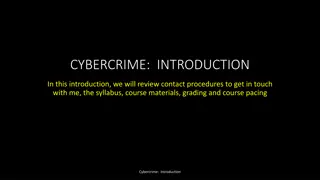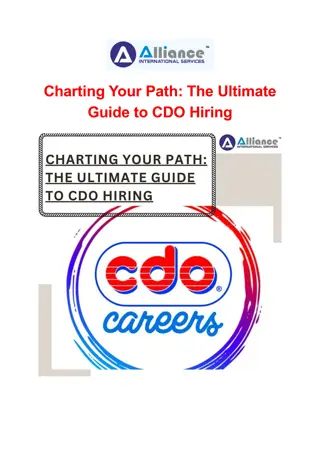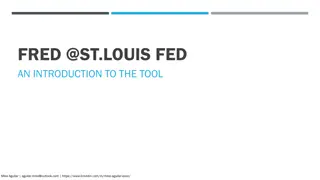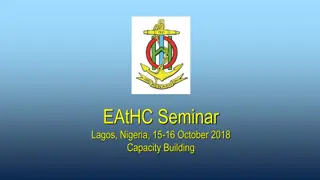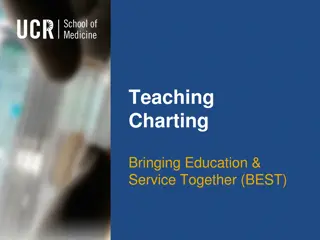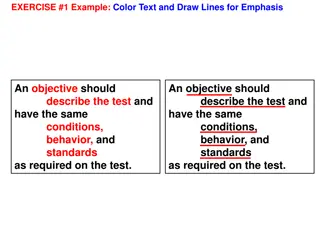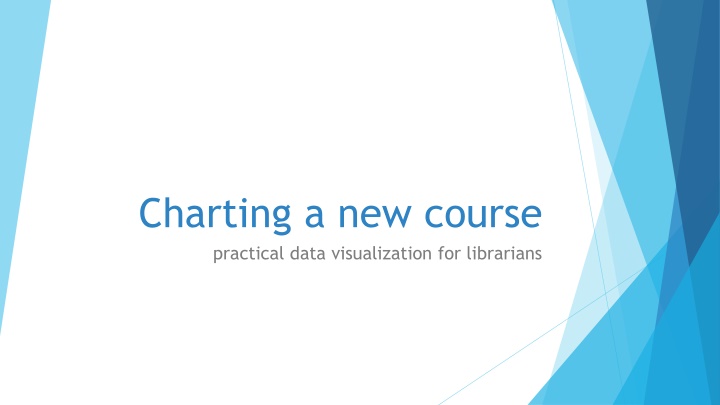
Practical Data Visualization for Librarians - Charting a New Course
Learn the principles and practices of effective data visualization and visual communication for librarians. Discover best practices for creating and formatting Excel charts, explore advanced data visualization techniques, and understand the usefulness of various chart features. Join experts Chris Belter, Candace Norton, James A. Zimble, Karen Gutzman, and Annette Mendoza in this insightful course. Check out the schedule for upcoming meetings and office hours to enhance your data visualization skills.
Download Presentation

Please find below an Image/Link to download the presentation.
The content on the website is provided AS IS for your information and personal use only. It may not be sold, licensed, or shared on other websites without obtaining consent from the author. If you encounter any issues during the download, it is possible that the publisher has removed the file from their server.
You are allowed to download the files provided on this website for personal or commercial use, subject to the condition that they are used lawfully. All files are the property of their respective owners.
The content on the website is provided AS IS for your information and personal use only. It may not be sold, licensed, or shared on other websites without obtaining consent from the author.
E N D
Presentation Transcript
Charting a new course practical data visualization for librarians
What you will learn Principles and practices of effective data visualization and visual communication. Best practices for creating and formatting basic Excel charts to make them both informative and visually appealing. Advanced data visualization in Excel to create charts such as heat maps, stacked bar charts, and scatter plots. The usefulness of chart features such as legends, sidebars, colors, and benchmarks.
Who we are Chris Belter bibliometrics informationist NIH Library Candace Norton Instruction Librarian James A. Zimble Learning Resource Center at the Uniformed Services University of the Health Sciences Karen Gutzman Head, Research Assessment and Communications Galter Health Sciences Library & Learning Center at Northwestern University Annette Mendoza Research Impact Librarian Galter Health Sciences Library & Learning Center at Northwestern University
Schedule Meeting 1 Thursday, June 17 1:00 pm 3:30 pm CT // 12:00 pm 2:30 pm ET Office Hour (optional) Friday, June 18 1:00 pm 2:00 pm CT // 12:00 pm 1:00 pm ET Meeting 2 Tuesday, June 22 1:00 pm 3:30 pm CT // 12:00 pm 2:30 pm ET
Schedule Meeting 1 (2.5 hours) 15 min: Welcome, review objectives, warm-up activity 1 hour, 5 min: Principles of Effective Data Visualization 10 min: Break 1 hour: Data Visualization in Excel Section 1: Get to know Excel Section 5: Create Basic Charts Section 6: Formatting Charts Homework: Hands On Creating Basic Charts
Schedule Office Hour (1 hour) Optional Review Homework: Hands On Creating Basic Charts
Schedule Meeting 2 (2.5 hours) 15 min: Review Hands On Creating Basic Charts 45 min: Data Cleaning and Manipulation in Excel Section 2: Basics of Data Cleaning Section 3: Basics of Functions Section 4: Basics of Data Manipulation 10 min: Break 20 min: Section 7: Advanced Data Visualization 30 min: Small group work on Hands On Scenarios 10 min: Break 15 min: Present work to large group (or post progress to slack)
Course Materials and Communication Course materials available here: Principles of Effective Data Visualization: Charting a New Course: Charting a New Course materials are available using the Attribution-NonCommercial- ShareAlike 4.0 License. This means you are free to share, copy, redistribute the material in any medium or format, AND you can adapt, remix, transform or build upon the material. However, you must provide appropriate credit, you may not use the material for commercial uses, and you must distribute your material under this same license. Where do I ask questions or chat with course instructors or attendees? Zoom chat: Use the Zoom chat function to ask questions or chat with attendees. Note, any public AND private conversations on chat are recorded Join us on the Slack channel:
Warm up: Zoom Bingo Set your Zoom screen to the Gallery view setting which allows you to see everyone as a set of tiled video screens. Using a pen and a piece of paper, write in large print a one-word answer to this question: What was the last thing you had to drink? Gallery view in Zoom Hold your response up to your camera. Check if you see a column or row (or any diagonal) that contains all the same responses! If yes, type BINGO! in the chat box. Other questions we could try: What type of animal was your first pet? What city are you in now? Holding up responses
Get your coffee and tea ready because we are heading into Principles of Effective Data Visualization



